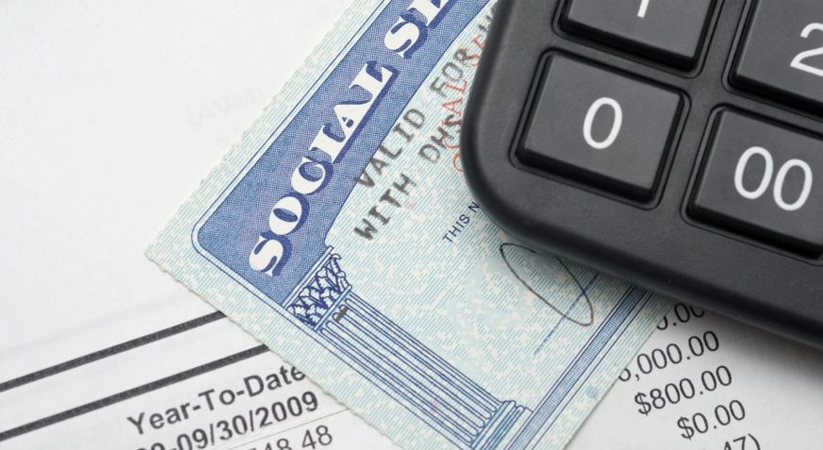How Are Social Security Benefits Taxed?
Published:
Do You Have to Pay Taxes on Your Social Security Income?
One thing that many new retirees forget is that they may need to pay taxes on a portion of their Social Security benefits. These benefits include monthly retirement, disability, and survivor payments — but not supplemental security income (SSI) payments, which are not subject to taxation.
Whether or not you will owe taxes on your Social Security benefits depends on your filing status and your income level. Although many people find that they aren’t required to pay taxes on their benefits, it is possible that up to 85% of the Social Security benefits you receive may be considered taxable income.
The Social Security Administration will mail you Form SSA-1099 each January, which tells you exactly how much you received in Social Security benefits during the previous year. You will need this information to file your taxes and to calculate how much of your Social Security benefits are taxable.
[NOTE: If you need to obtain another copy of your SSA-1099 form, you can request it using the Social Security Administration website.]
How Do I Figure the Taxable Portion of My Social Security Benefits?
The total amount of your income and Social Security benefits (for the taxable year) is what determines how your benefits must be reported on your tax return, thus impacting your overall tax liability.
To determine if any of your benefits are taxable, you should compare the “base amount” for your filing status with the sum of:
- One-half of your Social Security benefits
- All of your other income (including tax-exempt interest)
The base amount (also referred to as the “base exemption”) for each filing status is as follows:
- $25,000 for single, head of household, or qualifying widow(er) filers
- $25,000 for married couples filing separately (who lived apart for the entire year)
- $0 for married couples filing separately (who lived together at any time during the tax year)
- $32,000 for married couples filing jointly
For example, if your other income plus one-half of your Social Security benefits is less than $25,000 (or $32,000 for married joint filers), you will not have to pay taxes on your benefits.
Most tax preparation software programs will compute how much of your Social Security benefits are taxable. However, if you are preparing your own tax return or doing your own financial planning, then you will need to understand how to compute the taxable portion of your benefits.
You can use the Worksheet on Page 29 of the Instructions for Form 1040 to calculate how much of your Social Security benefits are subject to Federal income tax.
If you’re looking for another option, the IRS has an online tool called the Interactive Tax Assistant (ITA), which can help compute the tax on your Social Security benefits. To use the ITA tool, visit the IRS.gov website and click on the “Help & Resources” tab on the top menu. Then you’ll see a box on the left side that says “Questions? The Interactive Tax Assistant can help.” Click on the box to be taken to the ITA webpage. Scroll down to find your question under the “Income” category. In this case, your question is “Are My Social Security or Railroad Retirement Tier I Benefits Taxable?” (near the bottom of the page). Click on the question and then click “Begin” to start the process.
The Interactive Tax Assistant takes you through a series of questions to determine whether you will have to pay taxes on your Social Security benefits. In addition to your SSA-1099, you will need basic information on-hand to help figure your gross income.
Where Do I Report Taxable Social Security?
Social Security benefits are reported in the “Income” section on Page 1 of IRS Form 1040 (U.S. Individual Income Tax Return). Your total Social Security benefits must be entered on Line 20a, and the taxable portion is reported on Line 20b. (If you are using Form 1040A, your Social Security benefits are reported on Lines 14a and 14b.)
It is possible that Social Security benefits will require you to file a tax return when you otherwise wouldn’t. For example, a married couple filing separately must not live together at all during the tax year in order to qualify for the $25,000 base exemption. If a married couple (filing separately) resides together for even one day, their exemption threshold goes from $25,000 to $0, meaning that all of their Social Security benefits are considered reportable income.
On the other hand, a married couple filing jointly must combine their incomes and Social Security benefits when calculating the taxable portion of their benefits. Even if you received benefits but your spouse did not, you must still include your spouse’s income when determining if any of your benefits are taxable (for joint filers). As stated above, the exemption threshold for married joint filers is $32,000.
NOTE: If you received Social Security benefits, have taxable compensation, contributed to a traditional IRA, and you (or your spouse) are covered by an employer retirement plan, then you should use the Worksheets in “Appendix B” of IRS Publication 590 (Individual Retirement Arrangements) to determine how much of your Social Security is taxable.
I Don’t Want to Write a Check Every Year. What Are My Options?
If you find that your Social Security benefits are subject to tax, you can file Form W4-V (Voluntary Withholding Request) and opt to have income tax withheld from your payments. You can choose to have 7%, 10%, 15%, or 25% of your Social Security payments withheld for Federal taxes.
If you want to minimize the amount of your Social Security benefits that are subject to Federal income tax, it’s recommended that you visit a tax professional for advice.
For more information, please refer to IRS Publication 915 (Social Security and Equivalent Railroad Retirement Benefits).



